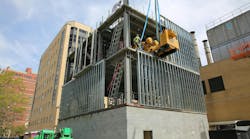A plant manager fired his plant engineer and hired a replacement. On that new hire’s first day, the plant manager complained about the downtime being too high and said he knew why. Then he shared several maintenance reports that showed PM completion rates consistently below 50%. “That’s why I fired your predecessor.”
Before his 90-day evaluation, the new plant engineer got PM completion rates up to 85%. Yet, downtime did not improve. Why?
Both people were looking at the wrong question. Two problems lay at the root of the high downtime:
- The causes were not being solved, so maintenance just kept repairing the same breakdowns time and again.
- All the repair work used up maintenance labor resources needed to complete the PMs.
Instead of solving for the downtime causes, the new plant engineer removed most assets from the PM system. Now instead of counting PM completion on all assets, he was counting PM completion on only some of the assets. The plant manager got the metrics he was looking for, but not the results he needed.




